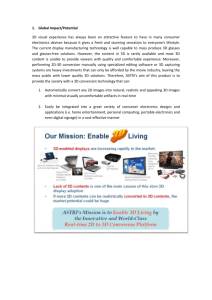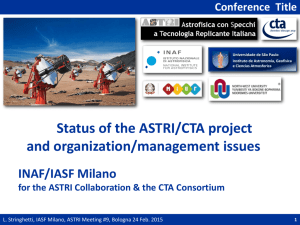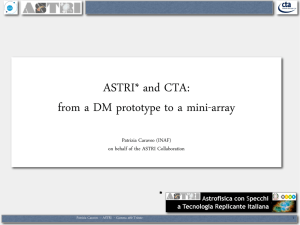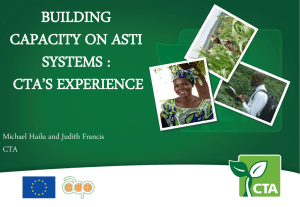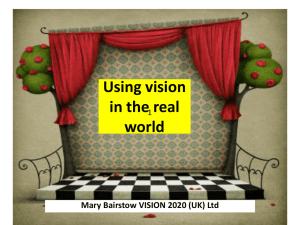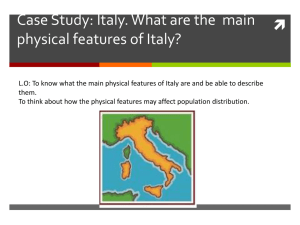P8.10 The high-level interface definitions in the ASTRI/CTA Mini
advertisement
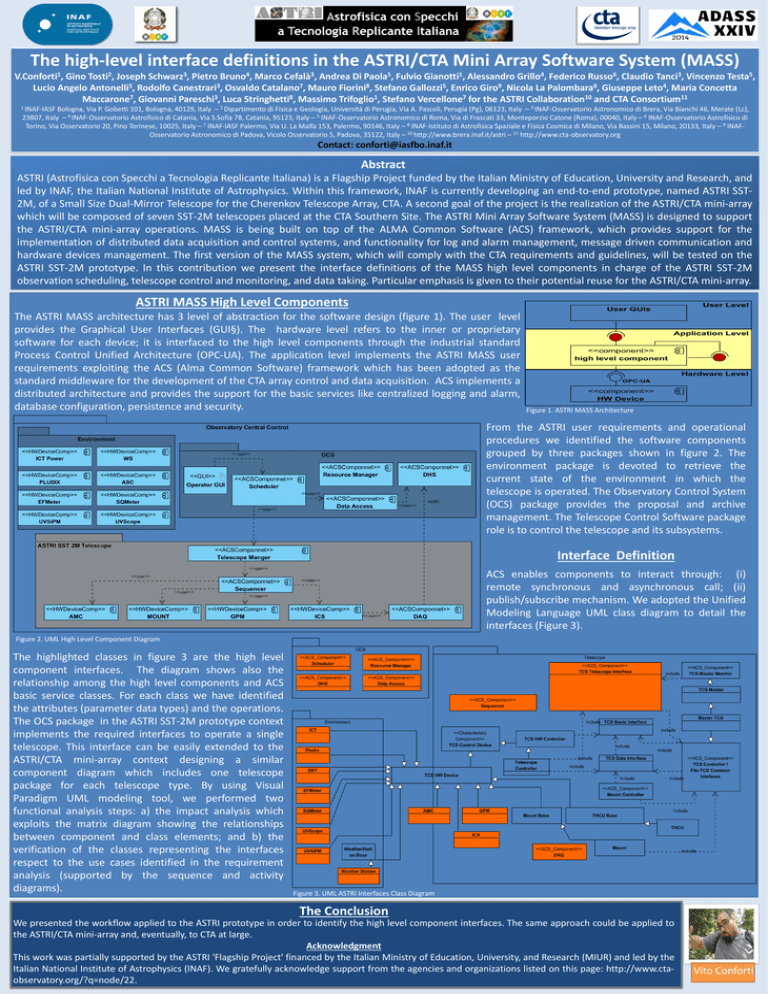
The high-level interface definitions in the ASTRI/CTA Mini Array Software System (MASS) V.Conforti1, Gino Tosti2, Joseph Schwarz3, Pietro Bruno4, Marco Cefalà3, Andrea Di Paola5, Fulvio Gianotti1, Alessandro Grillo4, Federico Russo6, Claudio Tanci3, Vincenzo Testa5, Lucio Angelo Antonelli5, Rodolfo Canestrari3, Osvaldo Catalano7, Mauro Fiorini8, Stefano Gallozzi5, Enrico Giro9, Nicola La Palombara8, Giuseppe Leto4, Maria Concetta Maccarone7, Giovanni Pareschi3, Luca Stringhetti8, Massimo Trifoglio1, Stefano Vercellone7 for the ASTRI Collaboration10 and CTA Consortium11 1 INAF-IASF Bologna, Via P. Gobetti 101, Bologna, 40129, Italy – 2 Dipartimento di Fisica e Geologia, Università di Perugia, Via A. Pascoli, Perugia (Pg), 06123, Italy – 3 INAF-Osservatorio Astronomico di Brera, Via Bianchi 46, Merate (Lc), 23807, Italy – 4 INAF-Osservatorio Astrofisico di Catania, Via S.Sofia 78, Catania, 95123, Italy – 5 INAF-Osservatorio Astronomico di Roma, Via di Frascati 33, Monteporzio Catone (Roma), 00040, Italy – 6 INAF-Osservatorio Astrofisico di Torino, Via Osservatorio 20, Pino Torinese, 10025, Italy – 7 INAF-IASF Palermo, Via U. La Malfa 153, Palermo, 90146, Italy – 8 INAF-Istituto di Astrofisica Spaziale e Fisica Cosmica di Milano, Via Bassini 15, Milano, 20133, Italy – 9 INAFOsservatorio Astronomico di Padova, Vicolo Osservatorio 5, Padova, 35122, Italy – 10 http://www.brera.inaf.it/astri – 11 http://www.cta-observatory.org Contact: conforti@iasfbo.inaf.it Abstract ASTRI (Astrofisica con Specchi a Tecnologia Replicante Italiana) is a Flagship Project funded by the Italian Ministry of Education, University and Research, and led by INAF, the Italian National Institute of Astrophysics. Within this framework, INAF is currently developing an end-to-end prototype, named ASTRI SST2M, of a Small Size Dual-Mirror Telescope for the Cherenkov Telescope Array, CTA. A second goal of the project is the realization of the ASTRI/CTA mini-array which will be composed of seven SST-2M telescopes placed at the CTA Southern Site. The ASTRI Mini Array Software System (MASS) is designed to support the ASTRI/CTA mini-array operations. MASS is being built on top of the ALMA Common Software (ACS) framework, which provides support for the implementation of distributed data acquisition and control systems, and functionality for log and alarm management, message driven communication and hardware devices management. The first version of the MASS system, which will comply with the CTA requirements and guidelines, will be tested on the ASTRI SST-2M prototype. In this contribution we present the interface definitions of the MASS high level components in charge of the ASTRI SST-2M observation scheduling, telescope control and monitoring, and data taking. Particular emphasis is given to their potential reuse for the ASTRI/CTA mini-array. ASTRI MASS High Level Components The ASTRI MASS architecture has 3 level of abstraction for the software design (figure 1). The user level provides the Graphical User Interfaces (GUI§). The hardware level refers to the inner or proprietary software for each device; it is interfaced to the high level components through the industrial standard Process Control Unified Architecture (OPC-UA). The application level implements the ASTRI MASS user requirements exploiting the ACS (Alma Common Software) framework which has been adopted as the standard middleware for the development of the CTA array control and data acquisition. ACS implements a distributed architecture and provides the support for the basic services like centralized logging and alarm, database configuration, persistence and security. Figure 1. ASTRI MASS Architecture From the ASTRI user requirements and operational procedures we identified the software components grouped by three packages shown in figure 2. The environment package is devoted to retrieve the current state of the environment in which the telescope is operated. The Observatory Control System (OCS) package provides the proposal and archive management. The Telescope Control Software package role is to control the telescope and its subsystems. Interface Definition ACS enables components to interact through: (i) remote synchronous and asynchronous call; (ii) publish/subscribe mechanism. We adopted the Unified Modeling Language UML class diagram to detail the interfaces (Figure 3). Figure 2. UML High Level Component Diagram The highlighted classes in figure 3 are the high level component interfaces. The diagram shows also the relationship among the high level components and ACS basic service classes. For each class we have identified the attributes (parameter data types) and the operations. The OCS package in the ASTRI SST-2M prototype context implements the required interfaces to operate a single telescope. This interface can be easily extended to the ASTRI/CTA mini-array context designing a similar component diagram which includes one telescope package for each telescope type. By using Visual Paradigm UML modeling tool, we performed two functional analysis steps: a) the impact analysis which exploits the matrix diagram showing the relationships between component and class elements; and b) the verification of the classes representing the interfaces respect to the use cases identified in the requirement analysis (supported by the sequence and activity diagrams). Figure 3. UML ASTRI Interfaces Class Diagram The Conclusion We presented the workflow applied to the ASTRI prototype in order to identify the high level component interfaces. The same approach could be applied to the ASTRI/CTA mini-array and, eventually, to CTA at large. Acknowledgment This work was partially supported by the ASTRI 'Flagship Project' financed by the Italian Ministry of Education, University, and Research (MIUR) and led by the Italian National Institute of Astrophysics (INAF). We gratefully acknowledge support from the agencies and organizations listed on this page: http://www.ctaobservatory.org/?q=node/22. Vito Conforti
